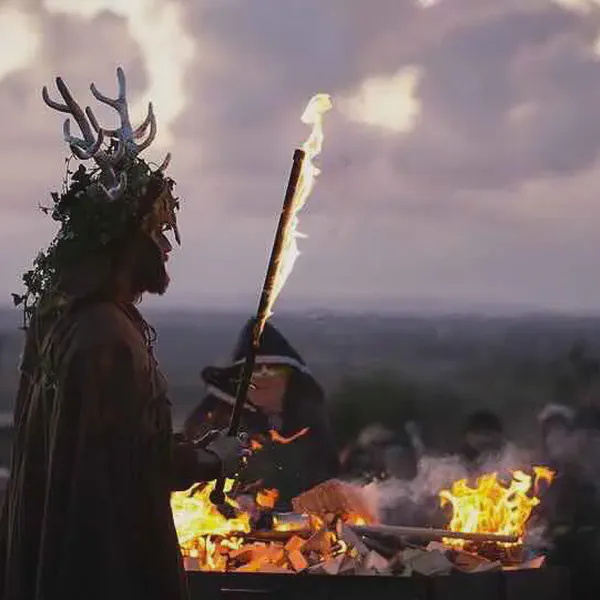
Samhain marks one of the two great doorways of the Celtic year, for the Celts divided the year into two seasons: the light and the dark, at Beltane on May 1st and Samhain on November 1st.
Samhain (pronounced “sow-in”) is a Gaelic festival that marks the end of the harvest season and the beginning of winter. It is traditionally celebrated from sunset on October 31st to sunset on November 1st, which is approximately halfway between the autumn equinox and the winter solstice. Samhain is one of the four Gaelic seasonal festivals and is considered by many to be a predecessor of the modern Halloween.
Key aspects of Samhain include:
Celtic Tradition
Samhain has Celtic origins and was observed by the ancient Celts in Ireland, Scotland, and parts of Wales. It was a time when livestock were brought in from summer pastures, and food supplies were prepared for the winter.
Thin Veil Between Worlds
In Celtic belief, Samhain was a time when the veil between the physical world and the spirit world was thin. This allowed spirits, both benevolent and malevolent, to more easily interact with the living.
Bonfires
Bonfires were a common element of Samhain celebrations. The Celts would gather to light large bonfires, which were believed to have protective and purifying qualities.
Costumes and Masks
There is evidence to suggest that the ancient Celts may have worn costumes and masks during Samhain to disguise themselves from spirits or to represent the spirits themselves.
Harvest Traditions
As a harvest festival, Samhain also involved activities like the bringing in of the last of the crops and the slaughtering of livestock for winter storage.
Modern Halloween
Many of the traditions associated with Samhain, such as costumes, bonfires, and the belief in a thin veil between worlds, have been incorporated into the modern celebration of Halloween.
It’s important to note that while Samhain has historical roots in Celtic traditions, modern celebrations may vary, and different contemporary pagan and Wiccan groups may celebrate it in diverse ways. The festival continues to be an important cultural and spiritual observance for some individuals and communities.
More From This Day


Private James Daly, of the Connaught Rangers, is last member to be executed for mutiny
November 01, 1920







Sir Benjamin Guinness, owner of the Guinness brewery from 1855, is born in Dublin
November 01, 1798



St. Oliver Plunkett, Archbishop of Armagh, born near Oldcastle, Co. Meath
November 01, 1625